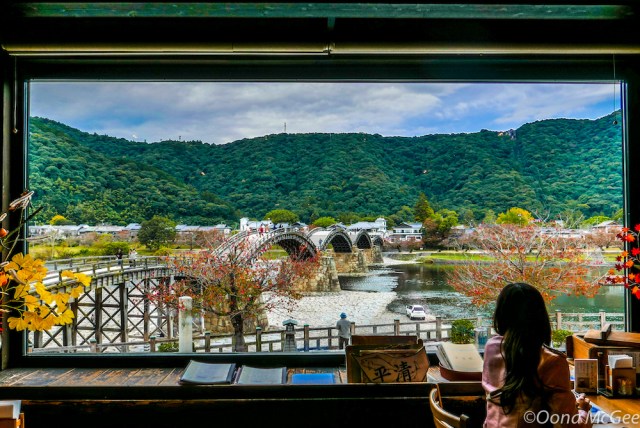
Day two of our epic adventure includes an ancient soy sauce factory, pressed sushi, and rabbit-eared samurai helmets.
Following on from day one of our tour around Yamaguchi Prefecture, as part of a trip arranged by the Tokyo Convention & Visitors Bureau, we’re now back with more gems from day two of our journey.
This time we’ll be taking a look at the best things to do, see, and eat in Iwakuni and Yanai, two places which deserve to be at the top of the list on any travel itinerary to the prefecture. And it’s all been arranged by locals, who want to share the best secrets from the area so travellers from Japan and overseas can enjoy them all!
Walk over wooden arches at Kintaikyo
We start the day with one of the most iconic sites in all of Yamaguchi: Kintaikyo. A National Treasure and one of Japan’s “three famous bridges”, along with Meganebashi in Nagasaki and Nihonbashi in Tokyo, Kintaikyo is a stunning historic pedestrian bridge and well worth the 300-yen (US$2.76) fee charged for a return crossing over its wooden arches.
▼ Kintaikyo is also known as “Kintai Bridge” or “Kintaikyo Bridge”.
First completed in 1673, after a number of straight bridges had washed away in the strong currents of the Nishiki River, the multi-arched bridge was eventually destroyed by a typhoon in 1950. During this post-war period, a lot of the country’s cultural properties suffered neglect, but residents were determined to faithfully rebuild the bridge, completing the reconstruction in 1953.
▼ At the turn of the 21st century, Kintaikyo underwent its first renovations since its 1953 reconstruction, to the tune of over 2 billion yen (US$18,424,700).
Not only is it fun to walk up and down over the five wooden arches, it’s also a great place to soak up some history as you get to imagine what it was like back when the bridge was exclusively used by samurai travelling to the castle.
Soak up samurai history at Iwakuni Art Musem
A short stroll from Kintaikyo is Kikko Park, a quiet and peaceful space which once belonged to the ruling daimyo during the Edo Period (1603-1868). Some historic buildings, like former samurai residences remain, and there are places where you can see cormorant birds and white snakes on display, but one of the gems you shouldn’t miss is the Iwakuni Art Musem.
This museum has a huge collection of impressive samurai-related artefacts on display, including swords, armour and weapons. They even have a collection of genuine samurai helmets, adorned with unusual motifs like clamshells, crab claws and rabbit ears, which were used to symbolise characteristics like strength and speed to both the wearer and those on the battlefield.
You could easily spend a few hours here, gazing at all the samurai artefacts and the special seasonal exhibits. The collection even includes Japanese National Treasures and items that have been lent to the New York Metropolitan Museum, making this one of the most impressive museums in the whole country.
Eat Iwakuni sushi at Hirasei
Founded back in 1858, Hirasei has everything you’d want from a top Japanese lunch spot: beautifully presented meals on trays, a stunning view of the city’s most iconic landmark, and a relaxed, traditional atmosphere.
▼ If you can get a window seat on the second floor, you’ll be treated to this gorgeous sight.
It’s also a great place to try Iwakuni-zushi, a type of pressed sushi made in a wooden box and topped with colourful ingredients such as shredded egg crepe, mashed seasoned fish, and shiitake mushrooms. It’s an absolutely delicious local specialty that’s been passed down in Iwakuni for generations.
Visit a traditional soy sauce factory
Not far from Iwakuni is Yanai, a city with a rich cultural history that’s still being preserved today. One of their special products is Kanro soy sauce, which is still being made and sold in a traditional factory that dates back to 1830.
Sagawa factory maintains traditional methods of making soy sauce, using large wooden vats and an original double-processing method which requires an additional year of fermentation compared to usual varieties.
The resulting soy sauce is extra dark, flavourful and aromatic, and very different to the ones available at supermarkets. The factory also has a store where you can buy different types of kanro soy sauce, which make great souvenirs for friends and family back home.
Make your own goldfish lantern to take home
As well as being famous for its traditional soy sauce factory, Yanai is also well known for its beautifully preserved “Shirakabe no Machi” or “White-walled Town”. The whitewashed buildings here are adorned with a number of cute red-and-white goldfish lanterns, a famous local handicraft with a history that stretches back to the Edo Period.
The town offers a 30-minute workshop where you can make your very own goldfish lantern to take home, and it’s a really fun and easy activity that people of all ages can enjoy.
Small lanterns can be made for 800 yen, while large versions cost 900 yen. Each style is easy to make, with helpful instructions from friendly staff making it a fun and memorable experience.
Iwakuni and Yanai are two historic places filled with a whole lot of traditional beauty and proud local customs. A trip to the area will leave you hungry for more adventure, which is a good thing because we’ve got more to explore on day three tomorrow!
Kintaikyo / 錦帯橋
Address: Yamaguchi-ken, Iwakuni-shi, Imazumachi 1-14-51
山口県岩国市今津町1-14-51
Website
Iwakuni Art Musem / 岩国美術館
Address: Yamaguchi-ken, Iwakuni-shi, Yokoyama 2-10-27
山口県岩国市横山2-10-27
Website
Hirasei / ひらせい
Address: Yamaguchi-ken, Iwakuni-shi, Iwakuni 1-2-3
山口県岩国市岩国1-2-3
Website
Sagawa Soy Sauce Factory / 佐川醤油店
Address: Yamaguchi-ken, Yanai-shi, Yanai 3708-1
山口県柳井市柳井3708-1
Website
Goldfish Lantern Making Experience at Yanai Seizo / やない西蔵
Address: Yamaguchi-ken, Yanai-shi, Yanai 3700-8
山口県柳井市柳井33700-8
Website
Photos ©Oona McGee/SoraNews24

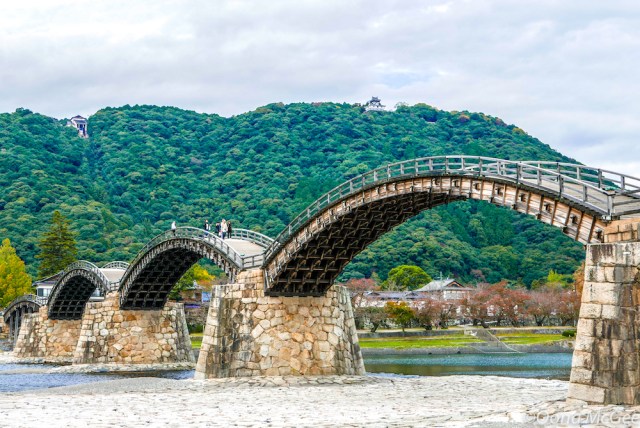
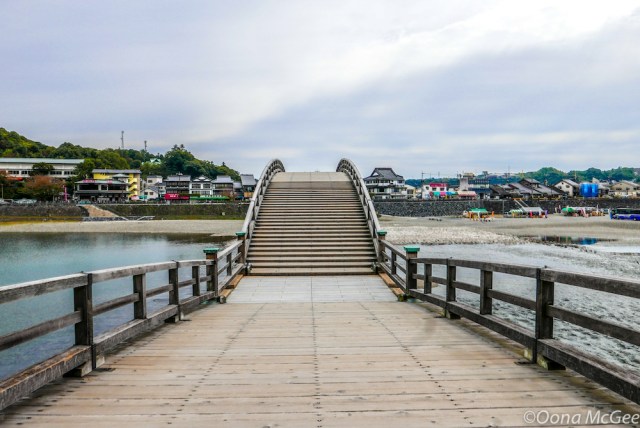

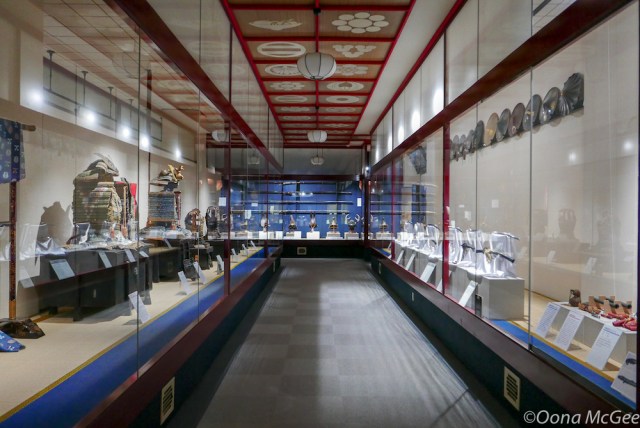
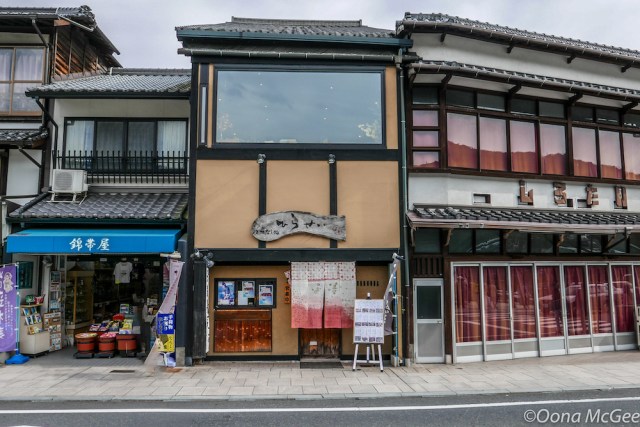
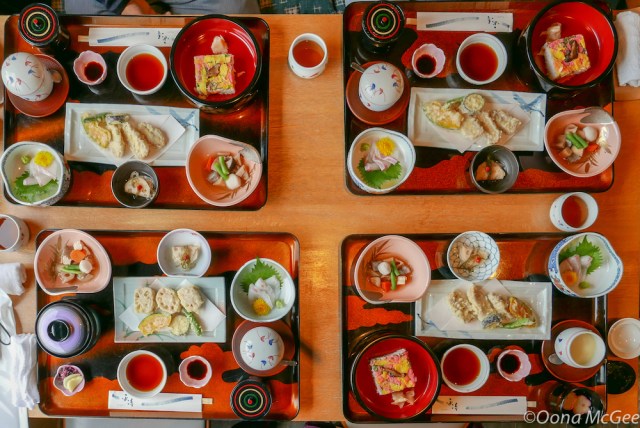
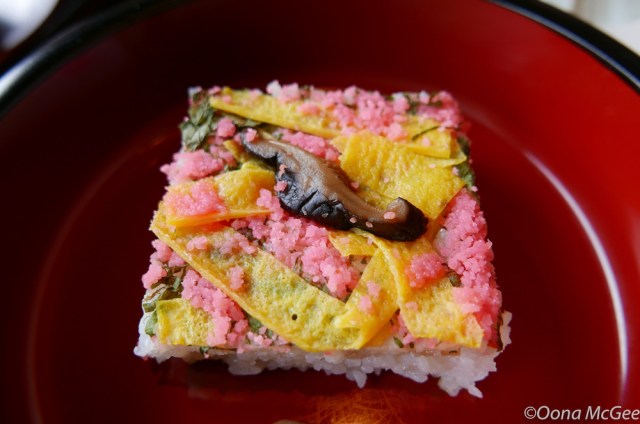
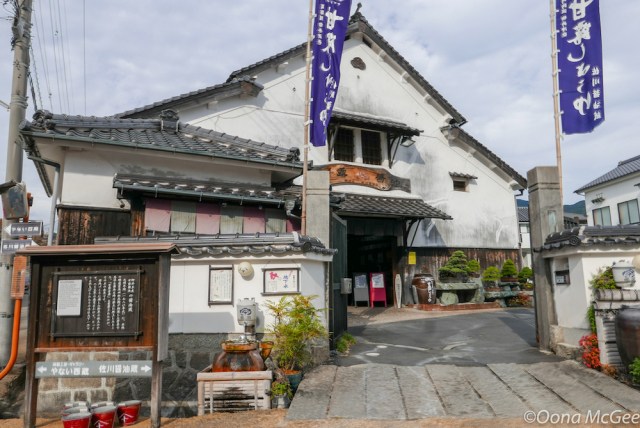
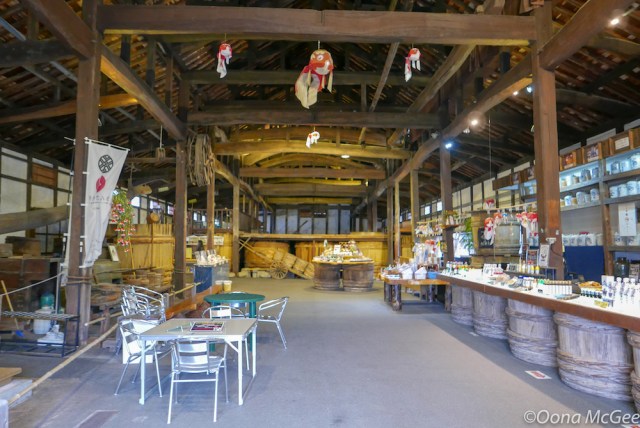
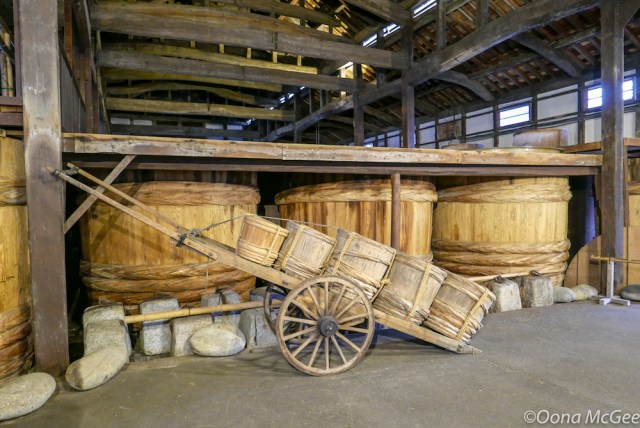
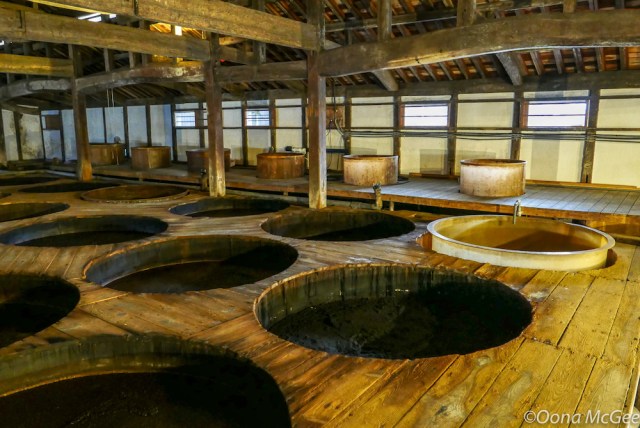
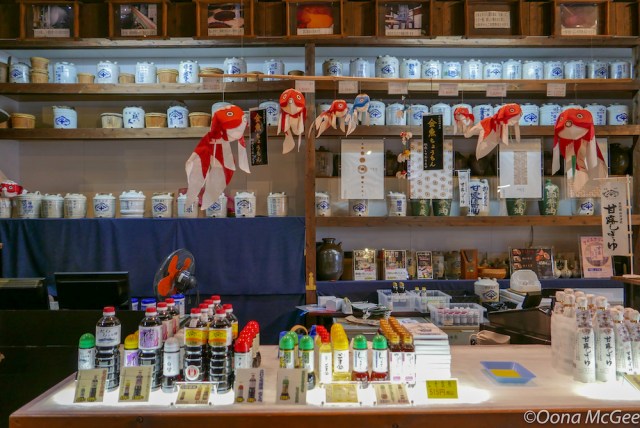
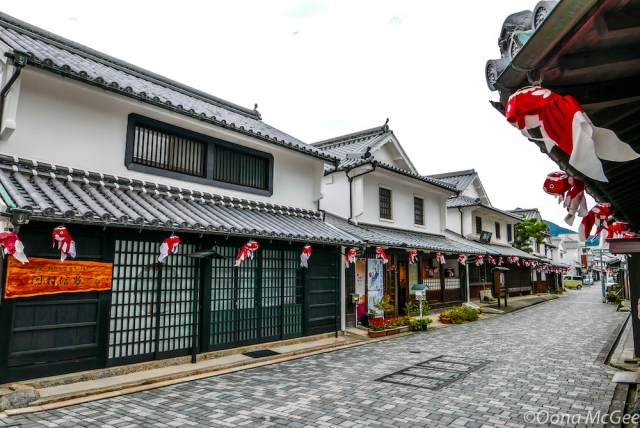
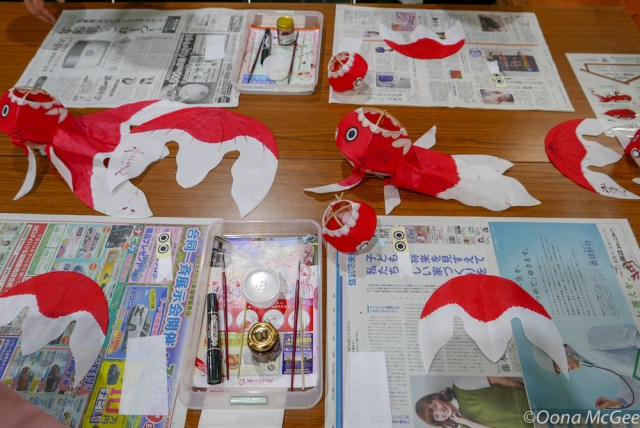
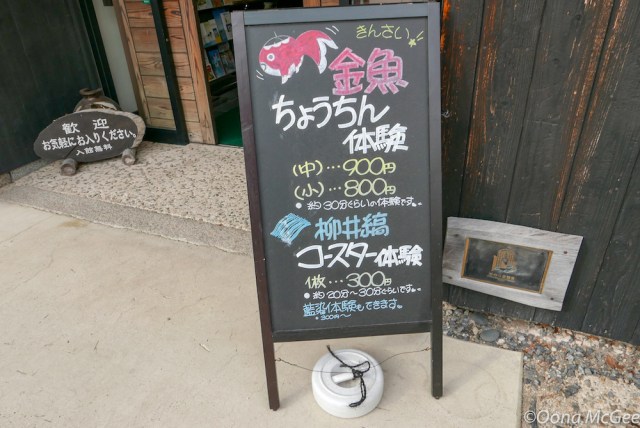
 Mystery Tourist Spot: Merlions in Japan?
Mystery Tourist Spot: Merlions in Japan? Round 2 of the ramen ice cream rumble – This time with real ramen! 【Taste test】
Round 2 of the ramen ice cream rumble – This time with real ramen! 【Taste test】 Here’s how one Tokyo neighborhood mixes modern technology and traditional culture to beat the heat
Here’s how one Tokyo neighborhood mixes modern technology and traditional culture to beat the heat Japanese-style Rilakkuma teahouse opens in one of the most beautiful places in Japan
Japanese-style Rilakkuma teahouse opens in one of the most beautiful places in Japan Disney soy sauce is now on sale in Japan—four different tastes, four cute designs
Disney soy sauce is now on sale in Japan—four different tastes, four cute designs Foreigner’s request for help in Tokyo makes us sad for the state of society
Foreigner’s request for help in Tokyo makes us sad for the state of society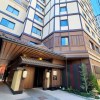 Japanese-style accommodation at the new Premium Dormy Inn hotel in Asakusa will blow your mind
Japanese-style accommodation at the new Premium Dormy Inn hotel in Asakusa will blow your mind Seaside scenery, history, and so many desserts on Yokohama’s Akai Kutsu【Japan Loop Buses】
Seaside scenery, history, and so many desserts on Yokohama’s Akai Kutsu【Japan Loop Buses】 Japanese city loses residents’ personal data, which was on paper being transported on a windy day
Japanese city loses residents’ personal data, which was on paper being transported on a windy day Japan’s summertime towelket pillowcases are even better with the addition of Ghibli stars【Photos】
Japan’s summertime towelket pillowcases are even better with the addition of Ghibli stars【Photos】 Harajuku Station’s beautiful old wooden building is set to return, with a new complex around it
Harajuku Station’s beautiful old wooden building is set to return, with a new complex around it Should you add tartar sauce to Japanese curry rice? CoCo Ichi makes diners an unusual offer
Should you add tartar sauce to Japanese curry rice? CoCo Ichi makes diners an unusual offer The oldest tunnel in Japan is believed to be haunted, and strange things happen when we go there
The oldest tunnel in Japan is believed to be haunted, and strange things happen when we go there Mikado Coffee is a 76-year-old coffee chain with a major celebrity connection
Mikado Coffee is a 76-year-old coffee chain with a major celebrity connection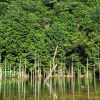 Japan Travel: Mysterious landscape found near a park with severed heads
Japan Travel: Mysterious landscape found near a park with severed heads McDonald’s new Happy Meals offer up cute and practical Sanrio lifestyle goods
McDonald’s new Happy Meals offer up cute and practical Sanrio lifestyle goods Japanese ramen restaurants under pressure from new yen banknotes
Japanese ramen restaurants under pressure from new yen banknotes French Fries Bread in Tokyo’s Shibuya becomes a hit on social media
French Fries Bread in Tokyo’s Shibuya becomes a hit on social media Red light district sushi restaurant in Tokyo shows us just how wrong we were about it
Red light district sushi restaurant in Tokyo shows us just how wrong we were about it New private rooms on Tokaido Shinkansen change the way we travel from Tokyo to Kyoto
New private rooms on Tokaido Shinkansen change the way we travel from Tokyo to Kyoto Tokyo Tsukiji fish market site to be redeveloped with 50,000-seat stadium, hotel, shopping center
Tokyo Tsukiji fish market site to be redeveloped with 50,000-seat stadium, hotel, shopping center Beautiful Ghibli sealing wax kits let you create accessories and elegant letter decorations【Pics】
Beautiful Ghibli sealing wax kits let you create accessories and elegant letter decorations【Pics】 Secret Kitchen bento serves Japanese flowers, birds, wind and moon in a box, but is it worth it?
Secret Kitchen bento serves Japanese flowers, birds, wind and moon in a box, but is it worth it? New definition of “Japanese whiskey” goes into effect to prevent fakes from fooling overseas buyers
New definition of “Japanese whiskey” goes into effect to prevent fakes from fooling overseas buyers Our Japanese reporter visits Costco in the U.S., finds super American and very Japanese things
Our Japanese reporter visits Costco in the U.S., finds super American and very Japanese things Studio Ghibli releases Kiki’s Delivery Service chocolate cake pouches in Japan
Studio Ghibli releases Kiki’s Delivery Service chocolate cake pouches in Japan All-you-can-drink Starbucks and amazing views part of Tokyo’s new 170 meter-high sky lounge
All-you-can-drink Starbucks and amazing views part of Tokyo’s new 170 meter-high sky lounge More foreign tourists than ever before in history visited Japan last month
More foreign tourists than ever before in history visited Japan last month New Pokémon cakes let you eat your way through Pikachu and all the Eevee evolutions
New Pokémon cakes let you eat your way through Pikachu and all the Eevee evolutions Disney princesses get official manga makeovers for Manga Princess Cafe opening in Tokyo
Disney princesses get official manga makeovers for Manga Princess Cafe opening in Tokyo Sales of Japan’s most convenient train ticket/shopping payment cards suspended indefinitely
Sales of Japan’s most convenient train ticket/shopping payment cards suspended indefinitely Sold-out Studio Ghibli desktop humidifiers are back so Totoro can help you through the dry season
Sold-out Studio Ghibli desktop humidifiers are back so Totoro can help you through the dry season Japanese government to make first change to romanization spelling rules since the 1950s
Japanese government to make first change to romanization spelling rules since the 1950s Ghibli founders Toshio Suzuki and Hayao Miyazaki contribute to Japanese whisky Totoro label design
Ghibli founders Toshio Suzuki and Hayao Miyazaki contribute to Japanese whisky Totoro label design Doraemon found buried at sea as scene from 1993 anime becomes real life【Photos】
Doraemon found buried at sea as scene from 1993 anime becomes real life【Photos】 Tokyo’s most famous Starbucks is closed
Tokyo’s most famous Starbucks is closed One Piece characters’ nationalities revealed, but fans have mixed opinions
One Piece characters’ nationalities revealed, but fans have mixed opinions We asked a Uniqlo employee what four things we should buy and their suggestions didn’t disappoint
We asked a Uniqlo employee what four things we should buy and their suggestions didn’t disappoint Should you add wasabi to your soy sauce at a sushi restaurant?
Should you add wasabi to your soy sauce at a sushi restaurant? Sushi Pokémon Tatsugiri inspires real-life Pokémon sushi and Japanese kitchenware line【Photos】
Sushi Pokémon Tatsugiri inspires real-life Pokémon sushi and Japanese kitchenware line【Photos】 The new Simose Art Museum in Hiroshima houses a floating, futuristic surprise next to the sea
The new Simose Art Museum in Hiroshima houses a floating, futuristic surprise next to the sea Samurai Ninja Museum Tokyo With Experience is true to its name, lets you slice with real katana
Samurai Ninja Museum Tokyo With Experience is true to its name, lets you slice with real katana Art Aquarium Ginza offers a captivating new way to enjoy the cherry blossoms–with goldfish!
Art Aquarium Ginza offers a captivating new way to enjoy the cherry blossoms–with goldfish! A visit to Japan’s cat beautiful, quirky, and touching cat temple, Unrinji【Photos】
A visit to Japan’s cat beautiful, quirky, and touching cat temple, Unrinji【Photos】 Nagasaki Lantern Festival: An awesome event that will whisk you away into a celestial world【Pics】
Nagasaki Lantern Festival: An awesome event that will whisk you away into a celestial world【Pics】 Samurai Toothpicks with bite-sized language lessons will help you look and sound like a swordsman
Samurai Toothpicks with bite-sized language lessons will help you look and sound like a swordsman Amazing exhibition of Japan’s legendary “cursed katana” is going on right now【Photos】
Amazing exhibition of Japan’s legendary “cursed katana” is going on right now【Photos】 Step aside, Hachiko! Yamaguchi’s Cat Temple offers a samurai tale of feline fealty
Step aside, Hachiko! Yamaguchi’s Cat Temple offers a samurai tale of feline fealty We visit the awesome new Samurai Museum in Shinjuku【Photos】
We visit the awesome new Samurai Museum in Shinjuku【Photos】 Foreign tourists pick the top 10 must-visit museums in Japan
Foreign tourists pick the top 10 must-visit museums in Japan Ramen ice cream on sale at 7-Eleven in Japan to help us multitask our comfort food consumption
Ramen ice cream on sale at 7-Eleven in Japan to help us multitask our comfort food consumption Ukraine’s ambassador to Japan criticises Uniqlo for continuing to trade in Russia
Ukraine’s ambassador to Japan criticises Uniqlo for continuing to trade in Russia
Leave a Reply